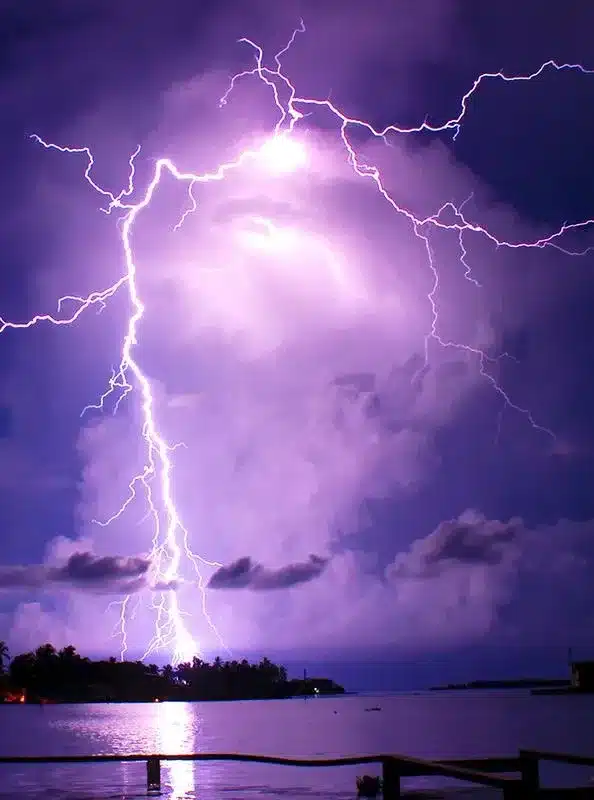About Catatumbo lightning:
- It is a mesmerising natural phenomenon that occurs over the Catatumbo River in Venezuela, where lightning strikes almost continuously.
- This phenomenon primarily happens at the mouth of the Catatumbo River, where it meets Lake Maracaibo, the largest lake in Venezuela.
- How does it occurs?
- Warm, moist air from the Caribbean Sea is pushed towards the Andes mountains, where it collides with cooler air descending from the peaks.
- This collision creates a perfect storm of sorts, as the warmer air is forced to rise rapidly by the shape of the local landscape. And as it does, it cools and condenses, forming towering cumulonimbus clouds.
- Meanwhile, the combination of strong winds and temperature differentials generates electrical charges within these clouds.
- The cumulonimbus clouds — sometimes reaching heights of more than 5 km — load up on static electricity.
- When the electrical potential within the clouds becomes too great, it discharges in the form of lightning.
- Catatumbo lightning is distinguished by its frequency and duration: the strikes occur for up to 160 nights in a year, with an average of 28 lightning strikes per minute at its peak. Thanks to this constant flow of current, the area has earned the title of “the lightning capital of the world”.
Key facts about Lake Maracaibo
- It is located in Venezuela and is the largest lake in Latin America.
- It is also among the oldest water bodies on the planet. Its proximity to the Andes Mountains and the Caribbean Sea creates a unique geographical setup that plays a crucial role in the frequency of lightning in the region.
Q1: What is a severe thunderstorm?
A thunderstorm is classified as “severe” when it contains one or more of the following: hail one inch or greater, winds gusting in excess of 50 knots (57.5 mph), or a tornado.
Source: Catatumbo lightning: a torrent of current
Last updated on November, 2025
→ Check out the latest UPSC Syllabus 2026 here.
→ Join Vajiram & Ravi’s Interview Guidance Programme for expert help to crack your final UPSC stage.
→ UPSC Mains Result 2025 is now out.
→ UPSC Notification 2026 is scheduled to be released on January 14, 2026.
→ UPSC Calendar 2026 is released on 15th May, 2025.
→ The UPSC Vacancy 2025 were released 1129, out of which 979 were for UPSC CSE and remaining 150 are for UPSC IFoS.
→ UPSC Prelims 2026 will be conducted on 24th May, 2026 & UPSC Mains 2026 will be conducted on 21st August 2026.
→ The UPSC Selection Process is of 3 stages-Prelims, Mains and Interview.
→ UPSC Result 2024 is released with latest UPSC Marksheet 2024. Check Now!
→ UPSC Prelims Result 2025 is out now for the CSE held on 25 May 2025.
→ UPSC Toppers List 2024 is released now. Shakti Dubey is UPSC AIR 1 2024 Topper.
→ UPSC Prelims Question Paper 2025 and Unofficial Prelims Answer Key 2025 are available now.
→ UPSC Mains Question Paper 2025 is out for Essay, GS 1, 2, 3 & GS 4.
→ UPSC Mains Indian Language Question Paper 2025 is now out.
→ UPSC Mains Optional Question Paper 2025 is now out.
→ Also check Best IAS Coaching in Delhi

















